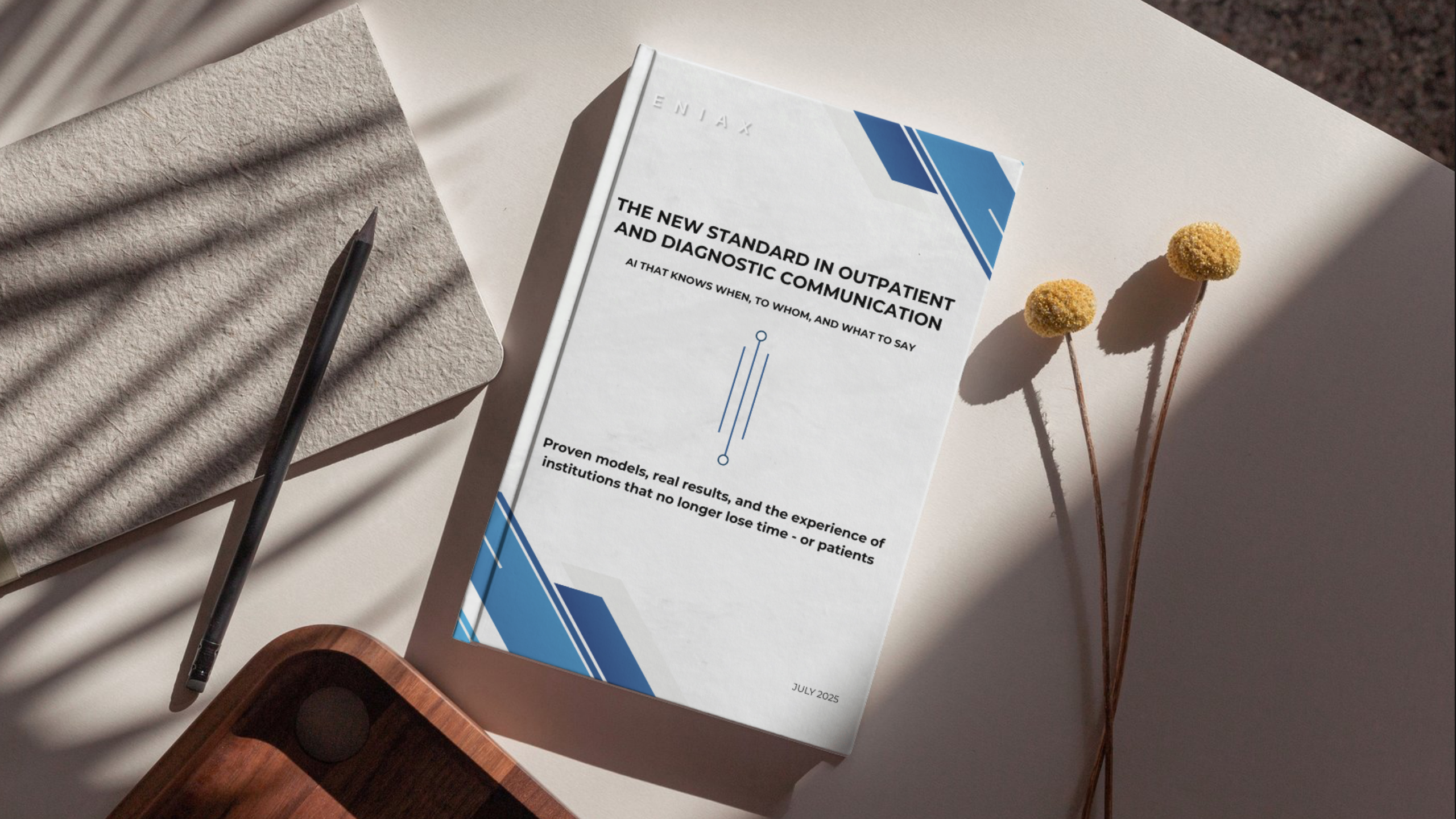The New Standard in Outpatient and Diagnostic Communication
10 years of experience, 260 million interactions, and real results gathered in one book

For years, call centers were the main entry point to healthcare systems. But reality exposed their limits:n
– average wait times above 4 minutes,
– more than 30% of calls left unanswered,
– administrative teams overwhelmed with repetitive tasks,
– frustrated patients and medical schedules that looked full… but still had empty slots.
This model became unsustainable. And the question started to resonate across institutions:
How can we guarantee real access to care in the middle of a digital health transformation, when communication fails at the very first contact?
The beginning of a journey
In 2016, at Clínica Dávila in Santiago, a group of administrators and Eniax specialists came together to find an answer.
From that search came Patricia — not another chatbot, but a communication system built for outpatient and diagnostic care.
The goal was clear: digitalize and automate patient interactions without losing empathy, anticipate no-shows, recover unused time slots, and free teams from manual tasks.
Ten years later: what we’ve learned
With more than 260 million real interactions and implementation in over 350 clinics and hospitals, Patricia has become the only integral solution for the entire patient journey — without fragmentation.
It digitalizes and automates every step:
– from the moment someone requests care,
– to diagnostic exams, results, and follow-up visits.
In doing so, Patricia:
– understands institutional rhythms,
– anticipates problems before they occur,
– applies the psychological rules of human communication to build trust.
The result: institutions can attend up to 20% more patients, advancing in the reduction of no-shows in outpatient care, optimizing capacity, reducing losses, and improving patient experience.
Real cases that prove it
– Hospital del Salvador (Chile)
Before Patricia: a 25% no-show rate and long waitlists coexisting with unused capacity.
After Patricia: no-show rate dropped to 9.2% and capacity use reached 95%.
– Analiza (Spain)
Before Patricia: over 100,000 monthly calls asking for test results, Google Reviews averaging 2.3 stars, and patient frustration at the end of the care journey.
After Patricia: the call center was eliminated, patients received proactive notifications, and ratings rose to an average of 4.7 stars with thousands of new positive reviews.
These are just two examples of a transformation that repeats itself across institutions: less chaos, more capacity, more patients attended.
Why a book
In September, Eniax celebrates 10 years since its foundation. To mark this milestone, we decided to bring together in one volume everything we’ve learned working with hospitals, clinics, and diagnostic centers across Latin America and Europe.
The book “The New Standard in Outpatient and Diagnostic Communication” is not theory. It’s a compendium of proven models, real metrics, and testimonies from institutions that have already transformed their operations.
It is written for those who carry the daily operational weight:
– administrative teams facing the overload of calls,
– clinic directors and managers seeking stability and efficiency,
– physicians and healthcare staff who need to spend more time on care and less on coordination.
An invitation
If your institution still relies on an overloaded call center or fragmented systems, this book can serve as a practical guide to take the next step: the adoption of a digital contact center integrated across the entire patient journey.
Download your free copy here: https://eniax.care/patricia-book
 English
English Español
Español